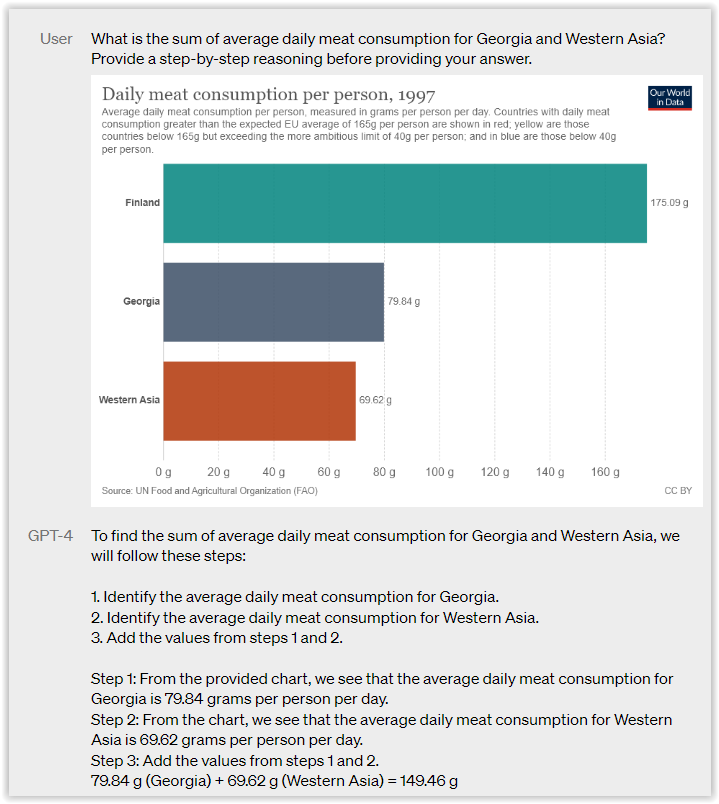GPT-4: How Is It Different From GPT-3.5? via @sejournal, @VincentTerrasi
Learn how OpenAI's latest version of the popular tool has improved to revolutionize marketing and AI-driven communications. The post GPT-4: How Is It Different From GPT-3.5? appeared first on Search Engine Journal.

GPT-4, the latest version of ChatGPT, OpenAI’s language model, is a breakthrough in artificial intelligence (AI) technology that has revolutionized how we communicate with machines.
ChatGPT’s multimodal capabilities enable it to process text, images, and videos, making it an incredibly versatile tool for marketers, businesses, and individuals alike.
What Is GPT-4?
GPT-4 is 10 times more advanced than its predecessor, GPT-3.5. This enhancement enables the model to better understand context and distinguish nuances, resulting in more accurate and coherent responses.
Furthermore, GPT-4 has a maximum token limit of 32,000 (equivalent to 25,000 words), which is a significant increase from GPT-3.5’s 4,000 tokens (equivalent to 3,125 words).
“We spent 6 months making GPT-4 safer and more aligned. GPT-4 is 82% less likely to respond to requests for disallowed content and 40% more likely to produce factual responses than GPT-3.5 on our internal evaluations.” – OpenAI
GPT-3.5 Vs. GPT-4 – What’s Different?
GPT-4 offers several improvements over its predecessor, some of which include:
1. Linguistic Finesse
While GPT-3.5 is quite capable of generating human-like text, GPT-4 has an even greater ability to understand and generate different dialects and respond to emotions expressed in the text.
For example, GPT-4 can recognize and respond sensitively to a user expressing sadness or frustration, making the interaction feel more personal and genuine.
 Screenshot from OpenAI, March 2023
Screenshot from OpenAI, March 2023
One of the most impressive aspects of GPT-4 is its ability to work with dialects, which are regional or cultural variations of a language.
Dialects can be extremely difficult for language models to understand, as they often have unique vocabulary, grammar, and pronunciation that may not be present in the standard language.
However, GPT-4 has been specifically designed to overcome these challenges and can accurately generate and interpret text in various dialects.
2. Information Synthesis
GPT-4 can answer complex questions by synthesizing information from multiple sources, whereas GPT-3.5 may struggle to connect the dots.
For example, when asked about the link between the decline of bee populations and the impact on global agriculture, GPT-4 can provide a more comprehensive and nuanced answer, citing different studies and sources.
 Screenshot from OpenAI, March 2023
Screenshot from OpenAI, March 2023
Unlike its predecessor, GPT-4 now includes a feature that allows it to properly cite sources when generating text.
This means that when the model generates content, it cites the sources it has used, making it easier for readers to verify the accuracy of the information presented.
3. Creativity And Coherence
While GPT-3.5 can generate creative content, GPT-4 goes a step further by producing stories, poems, or essays with improved coherence and creativity.
For example, GPT-4 can produce a short story with a well-developed plot and character development, whereas GPT-3.5 might struggle to maintain consistency and coherence in the narrative.
 Screenshot from OpenAI, March 2023
Screenshot from OpenAI, March 2023
 Screenshot from OpenAI, March 2023
Screenshot from OpenAI, March 2023
4. Complex Problem-Solving
GPT-4 demonstrates a strong ability to solve complex mathematical and scientific problems beyond the capabilities of GPT-3.5.
For example, GPT-4 can solve advanced calculus problems or simulate chemical reactions more effectively than its predecessor.
 Screenshot from OpenAI, March 2023
Screenshot from OpenAI, March 2023
 Screenshot from OpenAI, March 2023
Screenshot from OpenAI, March 2023
GPT-4 has significantly improved its ability to understand and process complex mathematical and scientific concepts. Its mathematical skills include the ability to solve complex equations and perform various mathematical operations such as calculus, algebra, and geometry.
In addition, GPT-4 is also capable of handling scientific subjects such as physics, chemistry, biology, and astronomy.
Its advanced processing power and language modeling capabilities allow it to analyze complex scientific texts and provide insights and explanations easily.
As the technology continues to evolve, it is likely that GPT-4 will continue to expand its capabilities and become even more adept at a wider range of subjects and tasks.
5. Programming Power
GPT-4’s programming capabilities have taken social media by storm with its ability to generate code snippets or debug existing code more efficiently than GPT-3.5, making it a valuable resource for software developers.
With the help of GPT-4, weeks of work can be condensed into a few short hours, allowing extraordinary results to be achieved in record time. You can test these prompts:
“Write code to train X with dataset Y.” “I’m getting this error. Fix it.” “Now improve the performance.” “Now wrap it in a GUI.”6. Image And Graphics Understanding
Unlike GPT-3.5, which focuses primarily on text, GPT-4 can analyze and comment on images and graphics.
For example, GPT-4 can describe the content of a photo, identify trends in a graph, or even generate captions for images, making it a powerful tool for education and content creation.
 Screenshot from OpenAI, March 2023
Screenshot from OpenAI, March 2023
Imagine this technology integrated with Google Analytics or Matomo. You could get highly accurate analytics for all your dashboards in a few minutes.
7. Reduction Of Inappropriate Or Biased Responses
GPT-4 implements mechanisms to minimize undesirable results, thereby increasing reliability and ethical responsibility.
For example, GPT-4 is less likely to generate politically biased, offensive, or harmful content, making it a more trustworthy AI companion than GPT-3.5.
Where Can ChatGPT Go Next?
Despite its remarkable advancements, ChatGPT still has room for improvement:
Addressing neutrality: Enhancing its ability to discern the context and respond accordingly. Understanding the user: Developing the capacity to understand who is communicating (who, where, and how). External integrations: Expanding its reach through web, API, and robotic integrations. Long-term memory: Improving its ability to recall past interactions and apply that knowledge to future conversations. Reducing hallucination: Minimizing instances where the AI is convinced of false information.As ChatGPT continues to evolve, it is poised to revolutionize marketing and AI-driven communications.
Its potential applications in content creation, education, customer service, and more are vast, making it an essential tool for businesses and individuals in the digital age.
More Resources:
ChatGPT: What Is It & How Can You Use It? 25 ChatGPT Examples For Digital Marketers & SEOs Will AI Kill SEO? We Asked ChatGPTFeatured Image: LALAKA/Shutterstock

 JaneWalter
JaneWalter 
































